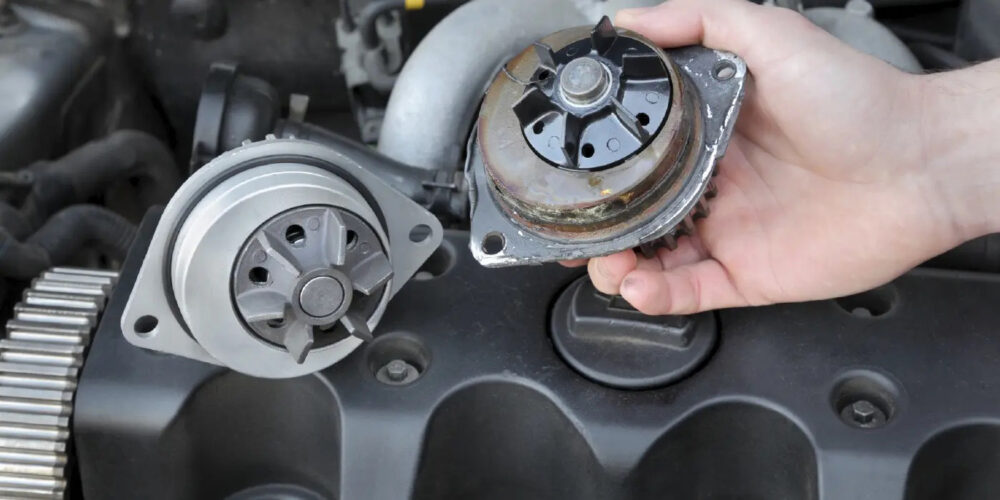QUESTION: Why do alternators have such a high return rate?
ANSWER: Alternators have such a high return rate because they are often misdiagnosed as the cause of a charging problem or low battery.
The alternator is the heart of the charging system. It generates the amps needed to keep the battery fully charged and to supply the demands of the ignition system, electrical system and onboard electronics. The alternator is so named because it converts alternating current (AC) into direct current (DC).
An alternator produces current by rotating a magnetic field inside a stationary conductor. The rotor inside the alternator produces the magnetic field. As the magnetic poles of the rotor pass beneath the three stationary stator windings in the alternator housing, a three-phased alternating current (AC) is induced in the stator windings. The AC current is then “rectified” (converted) to direct current (DC) by a diode trio (three sets of paired diodes) on the back of the alternator.
The alternator’s output is controlled by switching its field current on and off. A “voltage regulator,” located inside the alternator, on the back of the alternator or mounted elsewhere in the engine compartment, switches the field current on and off to control current output. The higher the load on the electrical system, the higher the current output of the alternator, if everything is working right.
On many newer vehicles, the powertrain control module (PCM) controls the duty cycle of the alternator to regulate voltage output. There is no voltage regulator on the alternator.
When a vehicle has a charging problem, the fault might be in the alternator, the voltage regulator (if it has one), the PCM or something else such as a wiring problem, loose or corroded battery cables or even a bad battery.
The days of DIY alternator rebuilding are history, so if anything inside the alternator has gone bad (stator or rotor windings, brushes, diodes or internal regulator), the whole unit has to be replaced with a new or remanufactured alternator.
If the fault is not diagnosed correctly, and the real problem is not the alternator, then obviously replacing the alternator won’t help. The problem will still be there, and the alternator will likely comeback as being “faulty.”
Most alternators that are returned under warranty have nothing wrong with them. If a new or reman alternator does not seem to be working correctly after it is installed, chances are the real problem is something else (such as a bad connector, wiring problem, bad battery cables, missing or loose ground strap, bad battery, etc.).
When an alternator fails, the first indication of trouble may be a glowing alternator warning light, a low voltage gauge, dim headlights or a battery that keeps running down. Sometimes, there may be only a partial failure. The alternator will still produce current, but not enough current to keep the battery fully charged. This kind of failure can be caused by one or more bad diodes in the diode trio (rectifier). The leading cause of alternator failure is overheating — which, in turn, is often due to overworking the charging system (extended idling with lights, air conditioning, sound system and other accessories all on, or trying to keep a bad battery charged up).
One of the best ways to make sure an alternator has really failed and needs to be replaced is to bench test the customer’s old unit in the store. This requires an alternator tester and some know-how about hooking up the test connections and running the test.
The tester will spin the alternator and measure its voltage and current output. As a rule, a good alternator will read within the specified voltage range (usually 14 to 16.2 volts), and 90 percent of its rated amp output. If the output is less than specifications, the alternator has reached the end of the road and needs to be replaced.
If an externally regulated alternator tests well but does not work when installed on the vehicle, the regulator may be faulty or have a poor ground connection. Or, there may be a wiring problem.
It’s also a good idea to test the new and/or remanufactured alternator the customer is buying before it leaves the store. Why? To verify the unit is working — so if it doesn’t work after he installs it, he’ll know the problem wasn’t the alternator, but something else.
Replacement alternators should have the same or higher amp rating as the original.











